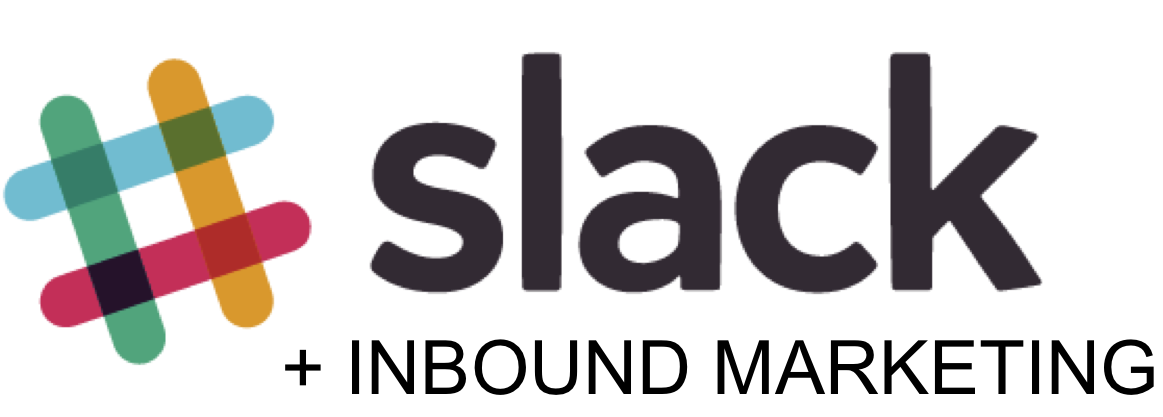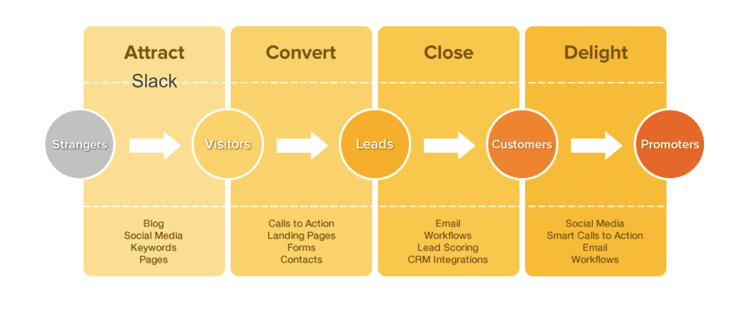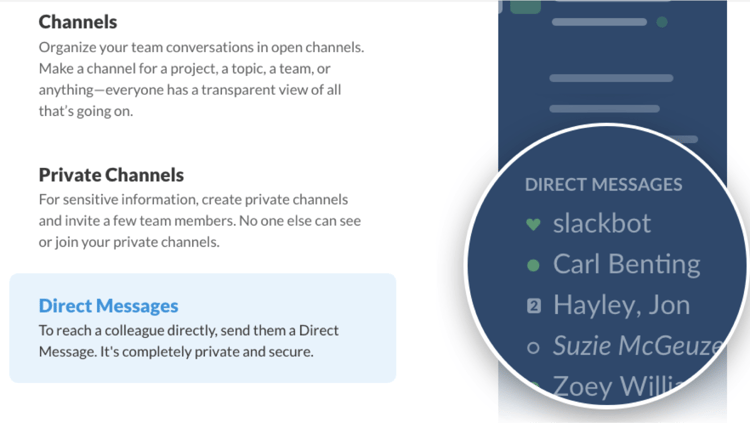
 Many highly successful inbound marketing campaigns involve groups. Many individuals and companies have their own Linked-In, Facebook, or Google Plus groups, while others stick to participating in relevant blog related posts or Twitter threads. Whichever strategy your company takes, considering Slack as a key element of your inbound group engagement can prove to be a very effective way to find prospects, listen, build community, engage existing clients members and prospective customers, build your thought leadership, add value to your group members, and keep track of your sector.
Many highly successful inbound marketing campaigns involve groups. Many individuals and companies have their own Linked-In, Facebook, or Google Plus groups, while others stick to participating in relevant blog related posts or Twitter threads. Whichever strategy your company takes, considering Slack as a key element of your inbound group engagement can prove to be a very effective way to find prospects, listen, build community, engage existing clients members and prospective customers, build your thought leadership, add value to your group members, and keep track of your sector.
It is no small coincidence Slack recently won INC Magazine’s Company of the Year for its internal team communications capabilities At its core, Slack is an instant messaging and powerhouse collaboration platform.
Slack also offers an innovative new alternative when it comes to inbound marketing to get a step up on the competition and leverage your educational content. In this post, we’ll cover what Slack is and how it works, as well as lay out some of the advantages to integrating Slack into your inbound marketing strategy.
With Slack you can create groups that attract your customers and share highly relevant inbound content with them. On the surface, it seems like a strong inbound strategy, doesn’t it?
So what rules should you follow and what precautions should you take with making Slack a piece of your inbound marketing funnel? First, let’s examine some initial benefits of working with Slack groups as part of your inbound marketing strategy and then we will explore some tips on what to avoid.

Like most social networking groups, the primary goal of a Slack group is to build a hub for quality discussions and feedback. Slack is a professional network, focusing on B2B interactions. That means the quality of the contacts you’ll get for any business-related content is much higher than those from Linked-In, Facebook, or Twitter.
Naturally, the more questions and content you share that’s relevant to the interests of the group, the more quickly you’ll move up on the influencer scale.
This provides inbound marketers with the opportunity to really get their posts in the hands of the right audience without having to pay for them.
Marketers know that inbound marketing can yield incredible results, but only if you understand how to engage with prospects. Too many inbound marketing campaigns tend to throw content out on social or Slack and wait for the leads to roll in.
If you are building traffic but not generating sales leads, then your inbound Slack strategy fails. Here's a summary of integrating Slack into the four pillars of inbound marketing.
Now that you see the connection between inbound marketing and Slack lets look at the pros and cons of getting started.
Although it may seem like a simple and obvious inbound or content marketing strategy, managing content distribution across multiple Slack groups means dedicating a great deal of time and effort to reading what others post and sharing your thoughts within those discussions.
There are many rules for content marketing on any social platform, and Slack is no exception. To find success on this platform, you will need to avoid click-bait marketing and focus more on creating highly relevant Slack groups.
Rules and Tips for Getting Started
Rule Number 1: Focus on ONE Channel
Start with ONE Slack Group and avoid creating multiple groups or topics. Focus and choose ONE specific channel. Unfortunately, not everyone follows this advice. Get your first Slack group growing and successful, and then it will be easier to launch new groups once you build your reputation as a thought leader in the Slack community.
Rule Number 2: Target ONE Persona
Do not label the Channel after your brand or branded offering. Instead, focus on a topic that potential members will want to join, contribute, and be proud to be part of. Focus your title on an ultra niche category based on one persona or target audience.
Rule Number 3: Share Problem Solving Content
Contribute on a consistent basis. Focus on fostering conversation and contribute appropriately without hijacking the conversations. In terms of content, focus on top of funnel problem-solving content that targets issues you have and others in the community have as well - this means no promotion. For each new piece of content you plan to publish on your blog, your website, or anywhere else, mark down the Slack group that the blog or long-form content could be beneficial for and ensure it is non-promotional.
Top of the funnel content shares on Slack can lead to landing pages on your site where you can then offer lead capture/nurturing call to actions that are at the appropriate stage of the buyer journey. They can then be integrated into your inbound workflows such as HubSpot.

Rule Number 4: Establish Rules of Engagement
Make it a part of your inbound strategy to respond to feedback. Save the marketing pitches for offline or private discussions with interested parties who you come across as a result of your conversations. On the group discussions themselves, make sure you focus on creating a dialogue — not on promoting your products or services.
Then, if you see certain people consistently posting relevant discussions in your groups or offering very helpful responses, consider the following to expand on your inbound marketing efforts:
This permission based Slack engagement can then enable you to add your prospect into your campaign flow at your discretion and automate from there upon their written, verbal, or CTA (Call to Action) driven approval.
A major problem for many Slack groups is the amount of spam or self-promotional materials posted by marketers hoping to drive traffic to their websites.
A side effect of this is that the relevant, high-quality discussions that are posted to the group’s pages end up getting pushed down and diluted among the spam posts, making it less appealing or enticing for group members to find posts worth interacting with. Potential cons of using Slack for Inbound Marketing
Joining Slack groups to share your content must be done very strategically. Being invited is a privilege, so treat it that way. Here’s how to do it effectively:
Identify the Slack Group you want to join – Limit it to one at first to test your efforts and measure engagement. In your posting, always try to ask a question or share a valid opinion on the content you post or comment on. By becoming an active member of the community, you will not only help your own content remain at the top of the group discussion thread for much longer, your ranking as a top influencer in the Slack group will also be raised. With Slack Video Chat to launch and compete with Skype and Google Hangouts, the opportunity to take first mover advantage is now.
Have you created a presence for you or your company on Slack yet?
GOING INBOUND WITH SLACK
Whether you want to connect with industry professionals, network, attract talent, establish thought leadership, or generate prospects and leads, Slack should be an integral part of not only your internal communications strategy, but also your lead generation and sales initiatives.
Click Here for a free consultation on how Slack can become a successful component of your inbound marketing strategy

Joe DiGiovanni, a purpose-driven entrepreneur with a background in behavioral science and marketing technology, co-founded Tapp Network, driving digital transformation for government agencies, Fortune 100 brands, and communities seeking to scale social impact through innovation.